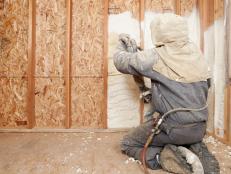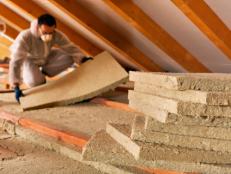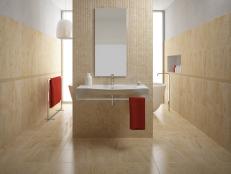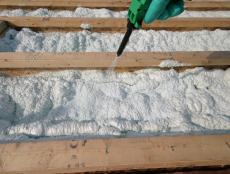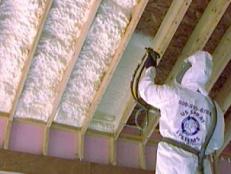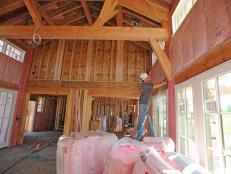The Benefits of Recycled Denim Insulation
Recycled denim insulation, also known as natural cotton fiber insulation, is a high-performance insulation that's made from scraps and clippings from the manufacture of denim clothing. This insulation is suitable for residential and commercial use in the same places as fiberglass or mineral wool batts would be used—between open roof rafters, ceiling joists and wall studs.
Recycled denim insulation offers these advantages over traditional fiberglass insulation:
- Sustainability. It typically contains 85 percent recycled content. Also, the natural cotton fibers are 100 percent recyclable at the end of the insulation's usable life.
- Eco-friendliness. By using post-industrial material, companies that produce recycled denim insulation divert waste destined for landfills. One company estimates that it diverts 200 tons a month. In addition, the manufacturing process for this insulation requires much less energy than the manufacturing of fiberglass insulation.
- Excellent thermal performance. Using recycled denim insulation results in higher HVAC efficiency and lower energy bills.
- Better indoor acoustics. Denim insulation's acoustic ratings are about 30 percent higher than those for traditional insulation, creating a quieter interior for homeowners.
- Better indoor air quality. Recycled denim contains no volatile organic compounds or formaldehyde, which off-gas and pollute a home's indoor air.
- Improved health and safety. Installing recycled denim doesn't irritate the skin or the respiratory tract. Moreover, the product requires no carcinogenic warning label. Typically, this insulation is treated with an EPA-approved borate solution that provides a Class A fire-resistance rating, which certifies a product as effective against severe exposure to external fires, not readily flammable and not a contributor to the spread of fire. (Borate has lower toxicity than table salt and is safe for humans and the environment.) It's also treated with an EPA-registered fungal inhibitor for additional protection against mold, mildew and pests.
A downside to installing recycled denim insulation is that it can cost twice as much as fiberglass for similar insulation effectiveness. Environmental engineers agree, however, that the benefits of removing asthma- and allergy-triggering toxins from a home's indoor air outweigh the increased expense.
The manufacturing of recycled denim insulation is a zero-waste process. First, scraps of denim fabric are processed to achieve a loose-fiber form that resembles cotton candy. Next, the material is treated for resistance to fire, mold, mildew and pests, blended with bonding fibers and heated. Finally, it's cut into batts. Any scraps from the manufacturing process can be shredded and returned to the raw material supply.
Recycled denim insulation is available in R-13, R-19, R-21 and R-30. For a given thickness of insulation, its R-value is similar to cellulose. Installing recycled denim insulation batts is similar to installing unfaced fiberglass batts. Recycled denim is available in standard sizes and designed to fit snugly between studs and joists without being stapled to the framing. For the best performance, be sure to encapsulate the batts on all six sides, keeping it in contact with framing, sheathing and drywall. The batts should not be compressed within a cavity, because that reduces the insulation's R-value. Recycled denim insulation can be cut to fit around protrusions with a heavy-duty utility knife. When the local building code requires that a vapor barrier be used with insulation, install polyvinyl sheeting across the insulated surface.






